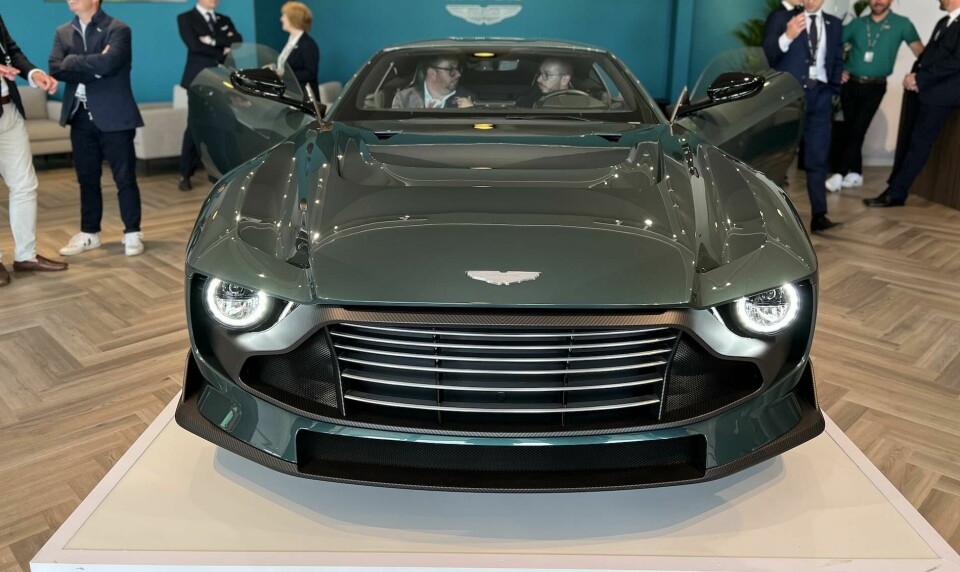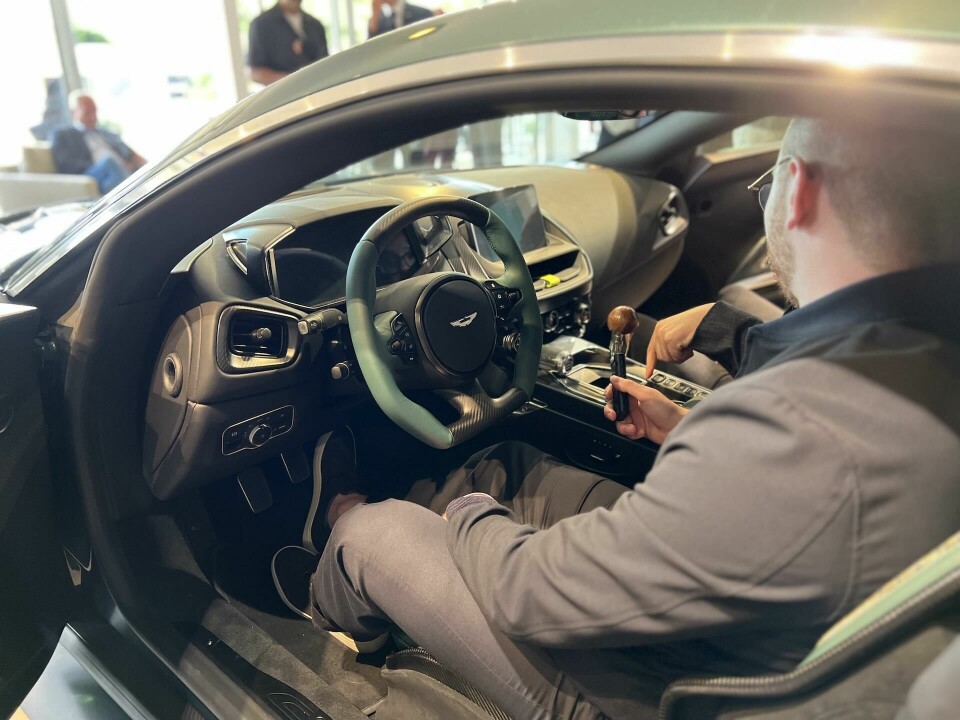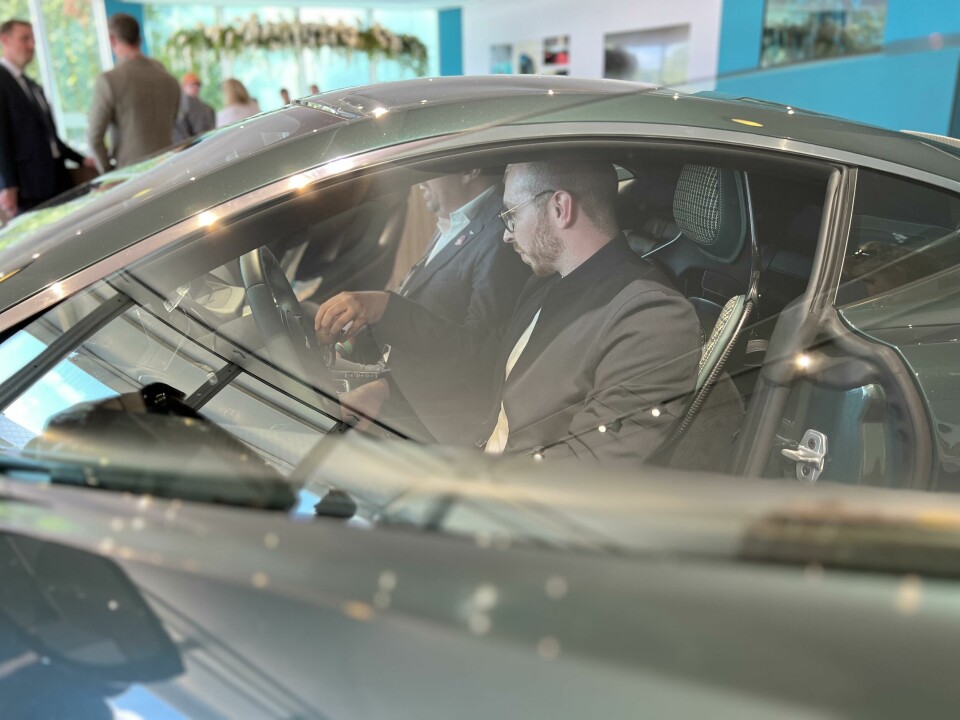
Aston Martin on heritage, gut instinct and the Valour V12
Car Design News chats to director of design, Miles Nurnberger, during the Goodwood Festival of Speed about the Valour V12
Miles Nurnberger seems to have been enjoying his role since re-joining Aston Martin after a short spell at Dacia. The returning director of design has spoken about “unlocking the value” of Aston Martin and its latest creation certainly seems to have done that.
The Valour is a striking looking thing that celebrates Aston’s 110th birthday (with just 110 units being produced) and builds on the earlier Victor prototype. So much of this new design harks back to the brand’s roots and is a dramatic step away from its current design language. Immediately noticeable is an absence of the Egyptian eyelash headlights of recent years, with round lamps returning in homage to the V8 Vantage of the 70s and 80s.
“It’s inspired by a wonderful period of our history – the seventies and eighties,” says Nurnberger, “and this was an era that had been a bit untouched so far by Aston. At the time, legislation meant you had to either have a single or double headlamp and while some manufacturers put it in a frame that disguised it a bit, others had a very pure, round headlamp. That immediately gives the face of the Valour a wonderful aspect.”
And although it is not explicitly a direct homage to the V8 Vantage there are other undeniable cues from that period: the dark (British racing?) green paint; shark-nosed front end; the abrupt K-tail and trio of square taillights. It is more muscle car than GT and manages to straddle both classic and modern design in a way that – to this writer’s eyes – has not quite been accomplished elsewhere.
“We did the one-off Victor and that really started our journey of diving into specials like this,” he continues. “We are really happy to be a bit retro in the mainstream – we want to stay progressive – but when it comes to special cars, we can do what we want. We can dive into history, go futuristic, we can play around with anything.”
This is a performance car at heart and once you look past the heritage nods there are elements of the design that are clearly functional. Huge rear diffusers dominate the lower mask, flanking a trio of exhaust pipes (!) at the centre of the rear skirt. Deep air vents sit behind the front fender and that gaping front grille will do well to cool the monster that lies beneath: a 5.2-litre V12 paired to a manual gearbox. Lurking behind its enormous 21” ‘Honeycomb’ rims are lime green brake callipers, and the bonnet bulge of the original V8 Vantage goes in the opposite direction, this time plunging from the cowl down into the centre of the clamshell hood.
The teamwork between everyone was one of the best… We felt light naughty schoolboys
Although design directors will say that every project is a joy to work on, this was a bit of a ‘pinch me’ moment for Nurnberger and the team. “We all loved the project just because you’d come in every day and although we had quite a tough timeline the team really pushed to make it happen,” he explains. “Somehow all those challenges brought the best out of people.”

The CMF team clearly had fun with this one too, decking out the exterior trim with carbon fibre in various places and playing with a real mix of interiors inside. “Carbon fibre allows you to go a little crazy,” says Nurnberger, “because if you were going to press a bit of aluminium like this, the engineer would have a heart attack at the idea of putting a hole into the panel. It’s a wonderful mix of new and old school themes.”
The car on show at Goodwood sported a delightful houndstooth tweed (used back in the day for its hardiness) paired with black leather and lime-accented pulls, titanium and carbon fibre on the door cards, plus polished walnut on its enormous gear lever. All the switchgear feels solid, weighty even, and was partly inspired by luxury watch design. (Aston’s official watch partner is Girard-Perregaux, if you were wondering, but there’s no branding on show here a la IWC with Mercedes or Breitling with Bentley).

Tweed aside, it is the centre console that captures the spirit of the team’s intentions here: an old school driver’s car. The mechanical linkages of the gearbox are left on show rather than being hidden away or neatly wrapped. In a way, it is a celebration of a nearly extinct breed of powertrain, showcasing as much as possible while it is still around. Nurnberger speaks passionately about this part of the car, using words such as “purity” and “being at one with the car.”
The Valour was an icon sat in the middle of the studio while we were doing other projects
It is a touchpoint that provides visual appeal, haptic feedback and a real connection with the machine that EVs are yet to replicate. He is particularly fond of that open-gate gearbox. “You talk about open gate… Well this is wide, wide open gate.” There is also matching leather luggage that can be neatly stowed behind the front seats, an effort to underline the “handcrafted” feel of the interior.
The lead time for designing a car seems to be shortening year-on-year, and although this is a low-volume effort it should be noted that full development of the Valour was completed in under a year. Nurnberger attributes this not to software innovation, AI or digital sculpting, but to a harmony between adjacent departments. “The teamwork between everyone was one of the best it has ever been with a project. I think this was because everyone was like, ‘look at what we’re building – we shouldn’t be doing this!’. We felt like naughty schoolboys, you shouldn’t be allowed to get away with doing a V12 manual car with 70s styling. I think everyone appreciated that.”
Such was the emphasis on beauty and performance, there was a particularly close relationship between design and engineering, something Nurnberger defines as being “magical” on this project.
And there were no shortcuts, with the design development process including all the usual steps for any other Aston. This meant the team had to work very quickly, including the clay modellers. “We did scale models for only two weeks because we felt it was the better way to do the process. Working very, very fast,” explains Nurnberger. “Sketching for two weeks, clay model scales for two weeks, then up to full size modelling – which probably only ran for six weeks. Then it was straight into surface delivery. Because it was a very small team, we could work in this way. It was great.”
With such a deviation from Aston’s current design language, it is difficult to know how to digest the Valour. Is it a one-off birthday present to the world, or indicative of broader upcoming shifts at Aston. Nurnberger cautions against the idea that this is a preview of what’s to come, but does recognise the merit of drawing inspiration down the line. “The Valour was a kind of icon sat in the middle of the studio while we were doing other future products, so it can’t help to even slightly influence some of the other projects,” he notes. “You don’t have to draw the same thing again, but there’s an attitude, a rawness there that I think will find its way into something in future.”
Every project involves a mix of head and heart, but with the Valour it was a bit more heart than head. Or as Nurnberger puts it, it was more about following “gut” decisions that simply felt right.


























